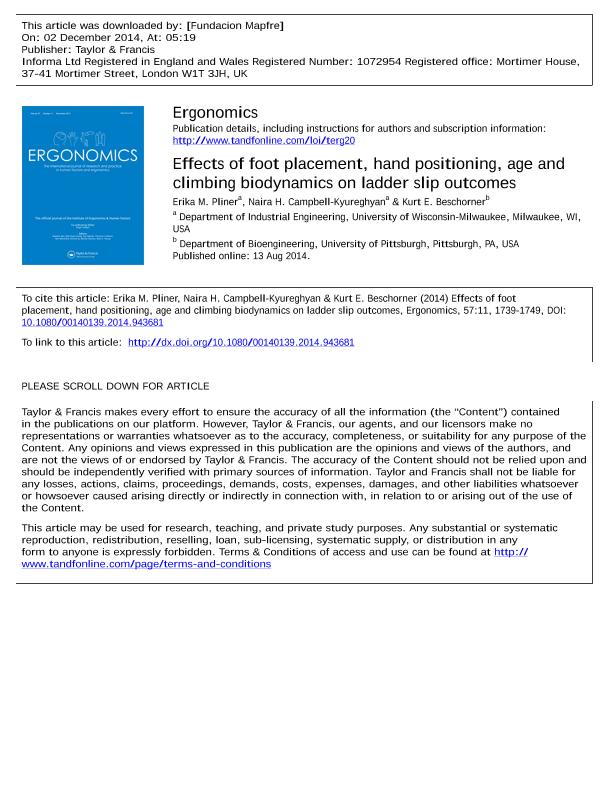Effects of foot placement, hand positioning, age and climbing biodynamics on ladder slip outcomes

Contenido multimedia no disponible por derechos de autor o por acceso restringido. Contacte con la institución para más información.
| Tag | 1 | 2 | Valor |
|---|---|---|---|
| LDR | 00000cab a2200000 4500 | ||
| 001 | MAP20140045624 | ||
| 003 | MAP | ||
| 005 | 20141203104157.0 | ||
| 008 | 141202e20140311esp|||p |0|||b|spa d | ||
| 040 | $aMAP$bspa$dMAP | ||
| 084 | $a875 | ||
| 100 | 1 | $0MAPA20140026777$aPliner, Erika M. | |
| 245 | 1 | 0 | $aEffects of foot placement, hand positioning, age and climbing biodynamics on ladder slip outcomes$cErika M. Pliner, Naira H. Campbell-Kyureghyan, Kurt E. Beschorner |
| 520 | $aLadder falls frequently cause severe injuries; yet the factors that influence ladder slips/falls are not well understood. This study aimed to quantify (1) the effects of restricted foot placement, hand positioning, climbing direction and age on slip outcomes, and (2) differences in climbing styles leading to slips versus styles leading to non-slips. Thirty-two occupational ladder users from three age groups (1824, 2544 and 4564 years) were unexpectedly slipped climbing a vertical ladder, while being assigned to different foot placement conditions (unrestricted vs. restricted toe clearance) and different hand positions (rails vs. rungs). Constraining foot placement increased the climber's likelihood of slipping (p < 0.01), while younger and older participants slipped more than the middle-aged group (p < 0.01). Longer double stance time, dissimilar and more variable foot and body positioning were found in styles leading to a slip. Maintaining sufficient toe clearance and targeting ladder safety training to younger and older workers may reduce ladder falls. | ||
| 773 | 0 | $wMAP20100019818$tErgonomics : the international journal of research and practice in human factors and ergonomics$dOxon [United Kingdom] : Taylor & Francis, 2010-$x0014-0139$g03/11/2014 Volumen 57 Número 11 - noviembre 2014 |

